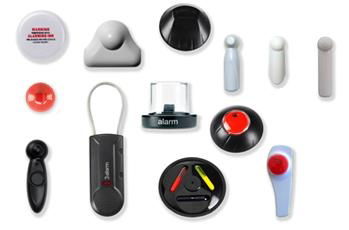Electronic Article Surveillance (EAS)
Electronic Article Surveillance (EAS) is considered the most successful and effective and scalable anti-shoplifting system available. Over the last decade its popularity has soared, with reports indicating over one million EAS systems have been installed globally, primarily within the retail sector. After implementing an EAS system, retailers can expect an estimated 60-80 per cent decrease in external theft and are useful anywhere there is an opportunity for theft of items of any size. Using an EAS system also allows the tagged stock to be easily seen and accessed by customers, rather than putting them in locked glass cabinets or behind the counter.
There are a few types of EAS technologies offered, each with unique characteristics that suit different applications. Learn more about EAS system types.
How does Electronic Article Surveillance (EAS) work?
Active tags and labels
Regardless of which EAS technology is used, all incorporate either a Security Tag or Security Sticker which is attached to the merchandise.
The security tag emits this signal at all times, so if a customer tries to leave the store without paying for an item, the tag sets off an alarm at the exit. If a security tag or security label is attached, a sales assistant will deactivate or remove it at the point of purchase, allowing for the paid merchandise to pass through the store security gates on exit without alarm
Deactivation
Once a consumer has purchased an item, a device built into the checkout counter can deactivate the security tag. This device is, essentially, a high-powered magnet that, when the item is moved near it, neutralises the signal being emitted from the security tag. This device emits a loud "beep," signifying that the security tag has been deactivated. Only now can a consumer leave the store without setting off an alarm.
Exiting with an active tag
In the event that an active or ‘live’ label or tag passes through a Store Security Detection System, the security gates will set off an alarm, alerting staff to a possible theft.
In a thorough consultation, vGuard™ assess and develop a solution to significantly reduce theft in your store. A suitable EAS solution is advised, taking into account your store’s environmental factors and which technology it’s best suited to. Features such as System Type, Detection Width , Detection Range , Security Level and Release Speed significantly affect the outcome and success of this small yet vital retail investment. There are many solutions that complement an EAS system. Incorporating a Closed Circuit Television (CCTV) system will offer the retailer optimum protection from external and internal theft. Benefit Denial Security Tags deter shoplifters and protect merchandise on a higher level to EAS alone.

